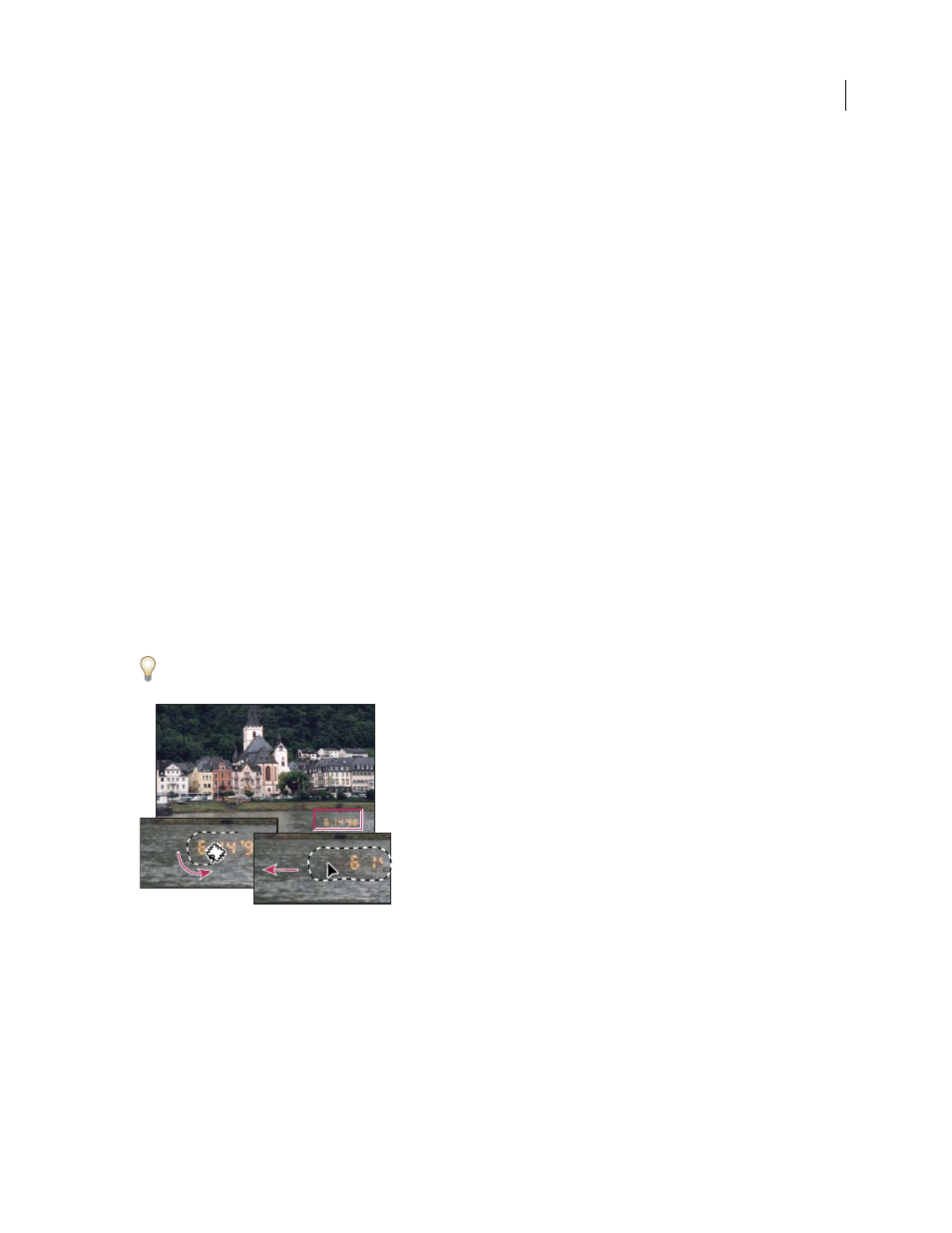Patch an area – Adobe Photoshop CS3 User Manual
Page 207

PHOTOSHOP CS3
User Guide
200
2
Choose a brush size in the options bar. A brush that is slightly larger than the area you want to fix works best so
that you can cover the entire area with one click.
3
(Optional) Choose a blending mode from the Mode menu in the options bar. Choose Replace to preserve noise,
film grain, and texture at the edges of the brush stroke when using a soft-edge brush.
4
Choose a Type option in the options bar:
Proximity Match
Uses the pixels around the edge of the selection to find an image area to use as a patch for the
selected area. If this option doesn’t provide a satisfactory fix, undo the fix and try the Create Texture option.
Create Texture
Uses all the pixels in the selection to create a texture with which to fix the area. If the texture doesn’t
work, try dragging through the area a second time.
5
Select Use All Layers in the options bar to sample data from all visible layers. Deselect Use All Layers to sample
only from the active layer.
6
Click the area you want to fix, or click and drag to smooth over imperfections in a larger area.
See also
“List of blending modes” on page 344
“Retouching tools gallery” on page 27
Patch an area
The Patch tool lets you repair a selected area with pixels from another area or a pattern. Like the Healing Brush tool,
the Patch tool matches the texture, lighting, and shading of the sampled pixels to the source pixels. You can also use
the Patch tool to clone isolated areas of an image. The Patch tool works with 8-bits or 16-bits-per-channel images.
When repairing with pixels from the image, select a small area to produce the best result.
Using the Patch tool to replace pixels
